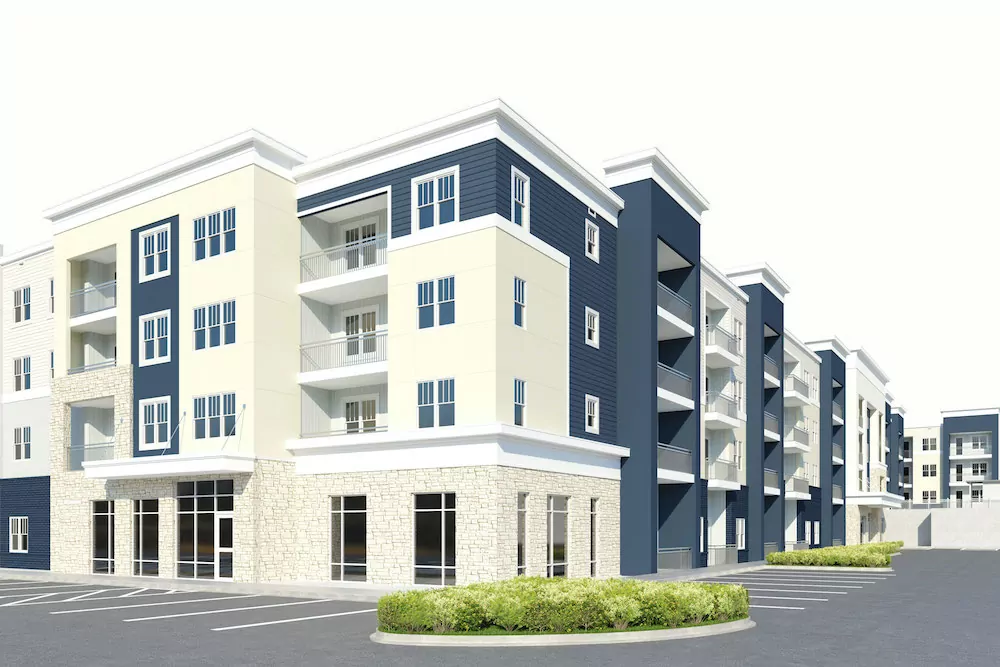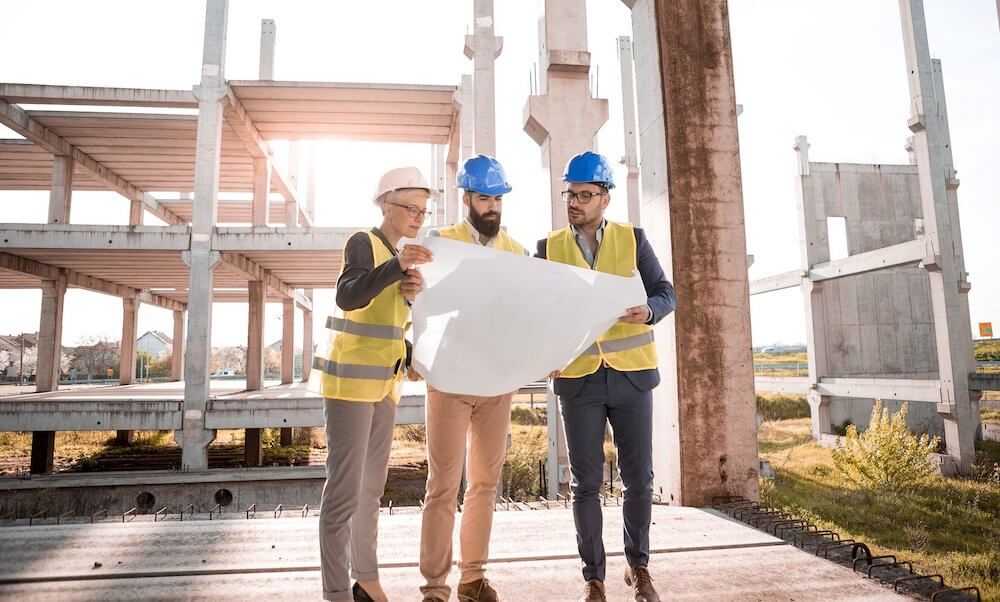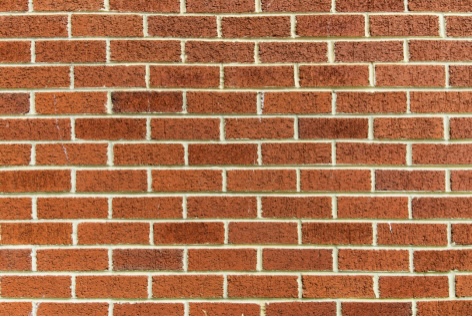Real Estate
Seizing the Opportunities: Investing in Senior Housing Amidst an Aging Population

As societies worldwide experience significant demographic changes, the rapidly aging population is one of the most pressing challenges. This demographic shift is reshaping various aspects of our society, including the need for adequate housing options for seniors. This article will explore the implications of this demographic trend and the opportunities for investing in senior housing.
The Aging Population: A Global Phenomenon
The world is witnessing an unprecedented increase in the proportion of elderly individuals within the population. Factors such as advancements in healthcare, declining birth rates, and longer life expectancies contribute to this demographic shift. Nations across the globe are grappling with the implications of an aging population and its multifaceted impact on various sectors, including housing.
The Demand for Senior Housing: A Growing Need
With the aging population comes an increased demand for senior housing. Many seniors prefer living in communities that cater to their specific needs, providing a safe, comfortable, and supportive environment. This demand is not limited to traditional nursing homes; it encompasses various housing options, such as independent living communities, assisted living facilities, memory care centers, and continuing care retirement communities.
The Economic Impact: A Lucrative Investment Opportunity
Investing in senior housing presents a promising opportunity for individuals and organizations alike. As the demand for senior housing continues to rise, so does the potential for financial gain. Furthermore, senior housing investments often contribute positively to local economies, generating employment opportunities and boosting economic growth.
Policy Considerations: Addressing the Needs of an Aging Population
Governments and policymakers play a crucial role in recognizing and addressing the housing needs of the aging population. It is essential to implement policies and regulations that facilitate the development of senior housing options, ensure affordability, and promote quality care and support services. Collaborative efforts between the public and private sectors can create an enabling environment for investment and innovation in senior housing.
The Rising Demand for Senior Housing: Current Trends and Future Projections
The increasing demand for senior housing is a significant driver for investment in this sector. This section will explore current trends and future projections that underline the growing need for senior housing options. Understanding these dynamics is crucial for investors seeking to capitalize on the opportunities presented by this expanding market.
Changing Lifestyles and Preferences
Today’s seniors seek housing options that align with their changing lifestyles and preferences. They desire independence, access to amenities, social engagement, and healthcare services tailored to their needs. Developers and operators of senior housing must adapt their offerings to meet these evolving expectations and provide a vibrant and fulfilling living experience for seniors.
Urbanization and Location Considerations
Urbanization plays a significant role in shaping the demand for senior housing. Many seniors prefer to reside in urban areas near healthcare facilities, cultural attractions, and social networks. Additionally, proximity to family and support systems is crucial to location decisions. As cities grow, investing in senior housing within urban centers presents an opportunity to cater to this demand.
Technology Integration for Aging in Place
Advancements in technology are transforming the senior housing landscape. Integrating smart home technologies, telehealth services, wearable devices, and monitoring systems allows seniors to age in place more comfortably and safely. Investors in senior housing should consider incorporating these technological innovations to enhance the living experience and attract tech-savvy seniors.
Sustainable and Age-Friendly Design
Recently, a growing emphasis has been on sustainable and age-friendly design principles in senior housing. Green building practices, energy efficiency, accessibility features, and well-designed communal spaces are becoming essential considerations for developers. Investments in environmentally conscious and age-friendly housing options align with societal expectations and contribute to long-term cost savings and resident satisfaction.
Future Projections and Market Growth
Future projections indicate that the demand for senior housing will continue to increase. The aging baby boomer generation and longer life expectancies ensure a sustained need for housing options that cater to seniors. Investors who recognize this long-term trend and position themselves strategically stand to benefit from the potential market growth and stable returns in the senior housing sector.
Investing in Senior Housing: The Financial and Societal Benefits
Stable and Recurring Income Streams
One of the primary financial benefits of investing in senior housing is the potential for stable and recurring income streams. Seniors typically sign long-term leases or contracts, providing a predictable revenue stream for investors. With proper management and occupancy rates, senior housing investments can generate consistent cash flow and deliver reliable returns over the long term.
Favorable Demographic Trends
Demographic trends, such as the aging population and increasing life expectancies, create a favorable market environment for senior housing investments. The growing demand for senior housing ensures a steady pool of potential residents, reducing vacancy risk and providing a solid foundation for sustained profitability.
Diversification of Investment Portfolio
Investing in senior housing offers an opportunity for diversification within an investment portfolio. By including senior housing as a component of a well-rounded investment strategy, investors can spread risk and reduce exposure to volatility in other sectors. The stability and resilience of the senior housing market make it attractive option for diversifying investment holdings.
Social Impact and Meaningful Contribution
Investing in senior housing goes beyond financial gains; it allows investors to make a positive societal impact. By providing high-quality housing options and support services, investors contribute to seniors’ well-being and quality of life. This sense of purpose and meaningful contribution can be rewarding and aligns with the growing focus on socially responsible investing.
Potential for Innovation and Technological Advancements
The senior housing sector offers opportunities for innovation and technological advancements. Investors can leverage emerging technologies to enhance the living experience of seniors, improve operational efficiencies, and create competitive advantages. Investing in senior housing allows for exploring new ideas and solutions to address the evolving needs of an aging population.
Challenges and Solutions in the Senior Housing Market
While investing in senior housing presents significant opportunities, it is essential to recognize and address the challenges that exist within the market. In this section, we will explore the key challenges faced in the senior housing sector and discuss potential solutions to overcome them, ensuring sustainable and prosperous investments.
Affordability and Accessibility
One of the main challenges in senior housing is affordability. Many seniors may struggle to afford housing and care services, especially as healthcare and living expenses continue to rise. Additionally, ensuring accessibility for seniors with mobility issues or disabilities is crucial. To address these challenges, developers and investors can explore financing options, subsidies, and innovative, cost-effective models that provide affordable and accessible senior housing solutions.
Regulatory and Compliance Requirements
The senior housing market is subject to various regulatory and compliance requirements. These include licensing, safety standards, healthcare regulations, and zoning restrictions. Staying informed and compliant with these regulations is crucial for investors and operators. Engaging with local authorities, obtaining necessary permits, and conducting thorough due diligence are vital steps to navigate this complex landscape.
Evolving Consumer Expectations
Consumer expectations within the senior housing market are continually evolving. Seniors are seeking personalized, high-quality care and modern amenities. Meeting these expectations requires ongoing investment in staff training, facility upgrades, and innovative service offerings. Investors must stay attuned to seniors’ changing needs and preferences to provide competitive and appealing senior housing options.
Operational and Management Challenges
Operating and managing senior housing facilities can present unique challenges. These can include staffing, healthcare coordination, maintenance, and resident engagement. Investors must ensure effective management strategies, including hiring qualified personnel, implementing comprehensive care plans, and fostering a supportive community environment. Partnering with experienced operators or hiring skilled management teams can help overcome these operational challenges.
Changing Healthcare Landscape
The integration of healthcare services within senior housing settings is becoming increasingly important. Seniors often require access to healthcare providers, medication management, and specialized care. Collaboration with healthcare organizations and professionals can help address this challenge, ensuring the delivery of comprehensive and coordinated healthcare services within senior housing facilities.
Future Outlook: Innovation and Growth Opportunities in Senior Housing
As the senior housing market continues to evolve, there are exciting opportunities for growth and innovation. In this final section, we will explore the future outlook for investing in senior housing and discuss the potential avenues for innovation, technological advancements, and meeting the evolving needs of seniors.
Technological Innovations and Aging in Place
Advancements in technology are poised to revolutionize the senior housing sector. From smart home automation and remote monitoring to virtual healthcare services and assistive devices, technology enables seniors to age in place with greater independence and safety. Investors can embrace these technological innovations to enhance the quality of life for residents, streamline operations, and differentiate their offerings in the market.
Sustainable and Green Senior Housing
Environmental sustainability is a growing priority across industries, and senior housing is no exception. Investors can seize the opportunity to develop environmentally conscious and energy-efficient senior housing communities. Incorporating sustainable design principles, renewable energy sources, and green building practices benefits the environment, attracts environmentally conscious seniors, and reduces long-term operating costs.
Integrated Healthcare and Wellness Services
The integration of healthcare and wellness services within senior housing communities is a trend that is likely to continue gaining momentum. Investors can explore partnerships with healthcare providers, offering on-site healthcare clinics, therapy services, and wellness programs. Senior housing communities can become holistic health and well-being hubs by providing comprehensive care and promoting active lifestyles.
Personalized and Lifestyle-Centric Offerings
Seniors increasingly value personalization and customization. Future investments in senior housing should prioritize offering a range of lifestyle-centric amenities and services. These can include fitness centers, spa facilities, social clubs, cultural activities, and educational programs tailored to the interests and preferences of residents. By focusing on individualized experiences, investors can create vibrant and engaging senior housing communities.
Intergenerational Living and Community Engagement
The concept of intergenerational living, where seniors and younger generations coexist and interact, is gaining recognition as a beneficial model. Investors can explore opportunities to incorporate intergenerational elements within senior housing communities, such as childcare facilities, shared common spaces, and collaboration with nearby educational institutions. Promoting community engagement and fostering meaningful connections across generations enriches the living experience for seniors.
Conclusion:
The future outlook for investing in senior housing is promising, with ample opportunities for innovation and growth. Technological advancements, sustainable design practices, integrated healthcare services, personalized offerings, and intergenerational living are key areas to focus on. By embracing these trends and adapting to the evolving needs of seniors, investors can create thriving senior housing communities that meet the demands of an aging population while delivering strong financial returns.
In conclusion, seizing the opportunities presented by investing in senior housing amidst an aging population requires a comprehensive understanding of the demographic shifts, current trends, financial and societal benefits, challenges, and future outlook. By strategically navigating these aspects, investors can contribute to providing high-quality housing options and support services for seniors while securing a profitable and sustainable investment venture.
Real Estate
5 Budgeting Tips For Your Home Maintenance Needs


A home’s systems and appliances play a critical role in daily life, so it’s important to make sure they are performing as needed. Keeping track of the system’s age and any past repairs can help you anticipate future costs.
Experts recommend saving at least 1% of your home’s value per year to prepare for maintenance costs. However, this can vary depending on your home’s exact location. Better options include home warranty policies that can save a lot of money on costly repairs.
- Set a Goal
Keeping up with regular maintenance can lessen the need for costly repairs in the future. However, emergencies will inevitably arise and it’s important to prepare for them.
Many experts recommend saving 1 to 2% of your home’s value each year to cover unexpected expenses like a new roof or appliances. But, this number might not work for every budget.
A better option is to save a set amount each month for your home maintenance needs. This can help you avoid dipping into emergency savings and minimize your chance of going into debt to pay for unexpected repair costs. When setting up your budget, remember why you started and keep your goals in sight. This will help you stay motivated even on those days you don’t feel like budgeting.
- Set a Time Frame
Performing regular maintenance helps to keep everything in good working order. Even small fixes like caulking the tub and cleaning out the gutters can help prevent serious problems down the line.
Make a list of all the tasks that need to be completed and determine how often they should be done. It’s important to create a schedule that accounts for both the indoor and outdoor maintenance needs of your property.
Set reminders and use a calendar or list app to help you stay on track. If you prefer paper, try a notebook with dedicated spaces for each task.
- Make a Checklist
Keeping up with home maintenance tasks can be challenging, and it’s easy to miss important chores. Creating a checklist is a great way to keep track of these tasks and ensure they are completed on a regular basis.
Performing regular maintenance on your home can help prevent future damage and save you money. For example, cleaning out your dryer ducts each month can drastically reduce the risk of fires caused by lint buildup.
Similarly, resealing your windows can help increase the insulation of your home,
reducing how hard it has to work to maintain a comfortable temperature. This can save you a significant amount on energy bills in the long run.
- Make Small Contributions
When you save money for home repairs, it’s important to start small. Adding a few dollars a month to your savings can help ease the upfront cost of major projects like a new roof, sewer upgrade, or replacement appliances and systems.
Financial experts generally recommend homeowners set aside 1%-4% of their property’s value for upkeep and repairs. However, this number may vary depending on the age of your home and its current condition.
Consider opening a separate savings account to make it easier to resist the temptation to withdraw this money for other expenses. You can also use a budgeting app to track your spending and make it easier to stick to a savings plan. Try Experian Boost(r) to see how saving for home maintenance can impact your credit score.
- Set Up a Savings Account
As a homeowner, it is important to set aside money for routine maintenance and emergency repair expenses. A savings account is a good place to keep these funds. It’s also important to use an account that is easy to access, like a high-yield savings or money market account.
Many experts recommend saving 1%-4% of your home’s value. This method takes into account the age and condition of your house. It’s also a good idea to budget for one-time costs, such as lawn care and snow removal.
If you are planning on replacing your roof, for example, calculate how much it will cost and save accordingly. This will help you avoid hefty borrowing expenses. You should also consider the average yearly expenses for other maintenance items, such as HVAC repairs and paint touch-ups.
Real Estate
A Step-By-Step Guide to Building Your Own Commercial Property


Owning a commercial property might be a prudent investment in today’s thriving economic environment. It gives you security and control over the location of your company, and it can also provide rental money. However, creating your business property is a difficult task. It necessitates meticulous preparation, close attention to detail, and in-depth knowledge of the building procedure. This comprehensive guide will guide you through the necessary processes to construct your business property.
1. Define Your Purpose and Budget
Setting a purpose and budget for the construction of your business property is the first and most important phase. You must have a distinct idea of the kind of property you want and the purpose for which it will be used. Will it be a mixed-use building, a retail store, or an office building? Take into account the location, scale, and particular needs of your company. Additionally, you need to decide on your budget and set aside money for all project costs, from land acquisition to building.
2. Find the Right Location
Regarding commercial real estate, location is the most important consideration. The success of your property hinges on how visible, approachable, and close to your target market. Make sure the zoning laws in the area you choose are in line with your planned use by researching the places that are appropriate for your type of business. If you’re looking for the help of professionals, you might want to think about hiring local architects, such as a commercial architect in colorado if you live in CO, who are aware of the area’s construction standards and regulations.
3. Assemble Your Professional Team
A committed team of experts is needed to walk you through the challenging process of commercial property construction. Architects, engineers, contractors, and legal counsel should all be important components of your team. These professionals will make sure that your project is created effectively and safely and complies with all legal criteria. Prioritize credentials and standing when picking professionals, and don’t be afraid to enlist referrals.
4. Obtain Necessary Permits
You will need to obtain the necessary permits and authorization from the government in the local area before you can start construction. These permits could include zoning permits, building permits, permits for conducting environmental impact assessments, and perhaps more. The procedure can take a lot of time, but it is necessary to guarantee that your project is in accordance with all of the rules and regulations.
5. Design Your Commercial Property
During the design process, your concept will start to take concrete form. Your property’s architects will collaborate closely with you to develop comprehensive designs and blueprints for your commercial establishment. This stage requires thoughtful consideration of the building’s aesthetics, layout, materials, and function. Incorporating sustainability measures and energy-saving features is also a chance to do something both economically advantageous and environmentally responsible.
6. Choose a Reputable Contractor
It is essential to the success of your commercial property project that you choose the best possible contractor. Try to find a reliable contractor who has a history of delivering high-quality work on time and without exceeding the allotted cost. Make sure you get numerous quotations and then compare them so that you can make an educated choice. To further protect your interests, check that the contractor possesses all the necessary credentials, including a license, a bond, and insurance.
7. Start Construction
It’s time to break ground and begin building once you’ve secured all the permissions, your design drawings are ready, and you’ve decided on a contractor. Site preparation, foundation work, structural framing, and interior finish-out are all included in this phase. Regular site visits and communication with your contractor will keep you updated on the project’s progress and enable you to handle any unforeseen difficulties that can appear.
8. Inspections and Quality Control
It is imperative to carry out inspections to ensure that the property satisfies all requirements outlined in the applicable building rules and regulations as construction draws to a close. These inspections might look at the environmental regulations, the structural integrity, the safety features, the electrical and plumbing systems, and more. Take care of any problems that can crop up during inspections in order to guarantee that your property is ready to be occupied.
Conclusion
It takes extensive planning, teamwork with experts, and attention to legal and regulatory standards to construct your commercial property. The procedure can be challenging, but with the appropriate team and a focused vision, you can produce something that will be a benefit for your company. Remember the value of location, subject-matter expertise, and meticulous project management as you proceed on this trip. You can successfully create and manage your business property by following these procedures and working with qualified experts.
Sources:
https://navimumbaihouses.com/blog/news/top-six-tips-for-building-your-own-commercial-property/
https://www.marchassociates.com/2018/6/26/5-things-you-must-consider-before-constructing-a-commercial-building/%20
https://www.indeed.com/career-advice/career-development/what-is-commercial-building
Real Estate
What is the Recommended Frequency for Masonry Maintenance in Your Building?


Masonry buildings are constructed using masonry materials. Masonry, also known as brick and block, is one of the oldest building materials on earth. It has been used for thousands of years to construct homes, churches, schools and other structures. The durability and fire resistance of masonry make it ideal for many types of buildings and applications. However, you need to maintain your building regularly so that it can last longer without any problems.
Masonry buildings are constructed using masonry materials.
Masonry buildings are constructed using masonry materials. These include stones, bricks, concrete blocks and other similar products. Masonry is used for walls, floors and roofs of buildings to make them strong and durable. It is also an excellent insulator against heat transfer between inside and out during summer months.
Why is Frequent Maintenance Necessary?
Masonry is a natural material that can absorb water. If you don’t maintain your masonry, it could become unsafe. Masonry may crack or crumble if it’s exposed to moisture for too long and without proper care.
You should perform maintenance on the exterior of your building every 3-5 years in order to keep it looking great and functioning properly throughout its lifespan.
How often you should maintain your building depends on its type and use.
How often you should maintain your building depends on its type and use.
- For example, if your building is new and hasn’t been in use for very long, then it might not need any maintenance at all right now. However, as time goes on and more people start using the building regularly, or if there are weather conditions that affect masonry (like rain), then it would be a good idea to start thinking about maintenance sooner rather than later so that any potential problems can be fixed before they become major ones.
- Similarly, if the structure has been around for several years without any major issues cropping up then there may not be much reason to start thinking about doing some work on it right now either – but again: depending on where you live/what kind of climate conditions exist there could come a point when these kinds of issues arise anyway!
How to Maintain Your Building
- Use masonry contractors. If your building is in need of maintenance, it’s best to use a professional masonry contractor who has experience with the type of materials used in your structure. This person can determine what repairs are needed, how long they will take and how much they’ll cost.
- Keep an eye on the building’s condition. Making sure that your building stays in good shape requires regular inspections by professionals or knowledgeable members of your staff or both! Regular inspections will allow you to identify issues early on before they become major problems down the line, which means less money spent overall on repairs later on because all problems have been taken care of before they become serious issues.
- Keep building materials in good condition: Make sure there aren’t any cracks or holes in any walls or floors; check doors and windows regularly (especially around hinges); look out for signs like peeling paint or mold growth that might indicate water damage has occurred somewhere inside; check ceilings regularly for signs like stains due to condensation buildup caused by poor insulation quality levels within insulation material layers themselves – this means something needs changed about those particular areas so moisture doesn’t continue collecting elsewhere throughout other parts.
We recommend that you contact a professional masonry contractor to perform routine inspections and repairs on your building. The frequency of maintenance will depend on the type of material used, how often it’s exposed to weather and other elements, as well as the use of the building. If you have any questions about how often your building should be maintained, please contact us today!
-



 Biography5 years ago
Biography5 years agoJacqulyn Elizabeth Hanley is the Mother of Liza Soberano?
-



 Home4 years ago
Home4 years agoEpson L3110 Driver Free Download Latest Updated Version
-



 Games3 years ago
Games3 years agoBest Free To Play MMORPG To Try This 2021
-



 Biography5 years ago
Biography5 years agoAmanda Levy Mckeehan Biography, Family, Net Worth, Age, Affairs, Facts
-



 Biography5 years ago
Biography5 years agoWho is Rose Dorothy Dauriac? Scarlett Johansson Daughter?
-



 Biography5 years ago
Biography5 years agoJessica Ditzel Secret Information that Nobody Knows | Joe Rogan’s Wife
-



 Biography5 years ago
Biography5 years agoWhat is the relation of Nathaniel Larry Osorno with Liza Soberano?
-



 Home5 years ago
Home5 years agoLiza Soberano Biography, Age, Family and Boyfriends































